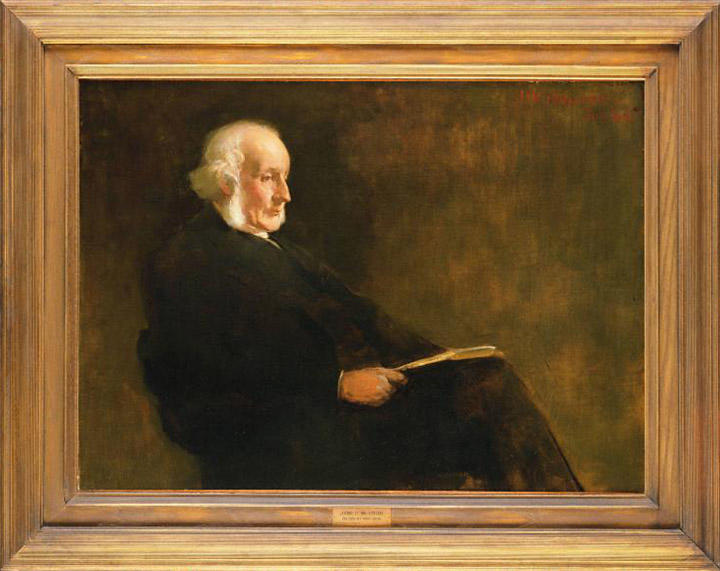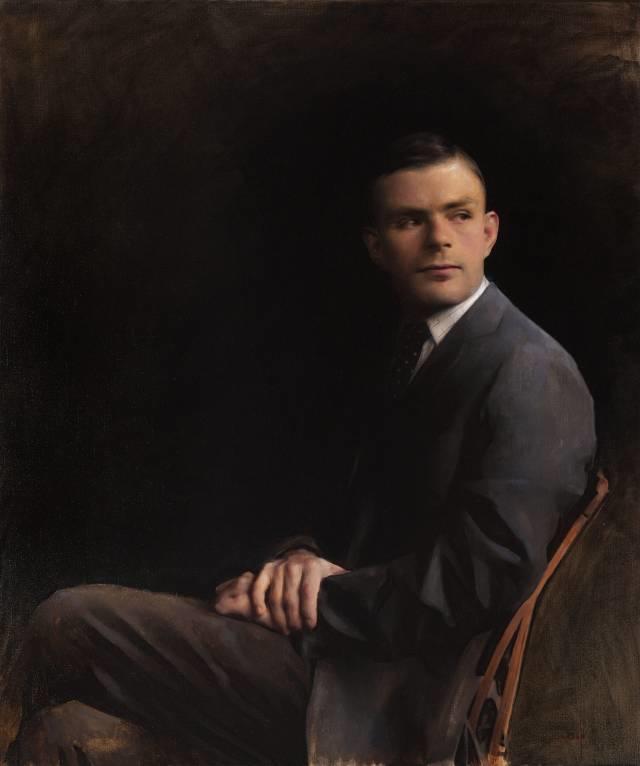“God has given you one face and you make yourselves another.”
— Hamlet, Act 3, Scene 1
You, the cagey and adept historian, may very well believe along with me that the crucial learning from history lies in ideas. People come and go, but the concepts behind whatever advances they make continue onward and even reappear down the timeline when circumstances are ripe. What goes around comes around.
So while I appreciate the efforts of the Campus Iconography Committee, the group organized by the University trustees following the Woodrow Wilson 1879 legacy discussions of a few years back, naming or renaming things on campus does not per se get me all atwitter unless the symbolism of the particular place makes sense, in the context of advancing our understanding of historical forces and conceptual advances. On the whole, they’ve done well, and the efforts honoring Toni Morrison, Sir Arthur Lewis, Jimmy Johnson, Betsey Stockton, and Robert Rivers ’53 around the older, more historic parts of campus have been sensible, honoring people who clearly represented positive influence in the University and the community.
One subsidiary iconography initiative has been in the area of campus portraiture. Admittedly, this is a facet of history that, with the exception of University presidents and the periodic dean or two, has pretty much languished for over a century. While I don’t really object, and love giving work to starving artists, I’ve wondered about their impact in an ephemeral modern world, in which every minute over two hours you add to the running time of any feature film seemingly cuts its potential audience by 10 percent. Again, the names of those depicted are inarguably important: Morrison, Lewis, Rivers, Bill Bradley ’65, Denny Chin ’75, the singular Carl Fields, Elaine Fuchs *77, Ruth Simmons, and Sonia Sotomayor ’76 are each worthy of honor and deep consideration. But is that medium sufficient today? There is, however, yet one other Princetonian to be so honored, and in him we see something additional.
A while back, when the Nassau Hall Faculty Room, heavy with portraiture, was spiffed up and put on fresh exhibit in a project called “Inner Sanctum” (with a truly wonderful catalogue/book shepherded by Karl Kusserow of the Art Museum), I noted its relationship to Toni Morrison’s address “The Place of the Idea; The Idea of the Place” and we looked at it as a distilled Place of the Idea, of genius loci. And because it leapt off the wall and strangled me to get recognition, I focused on John White Alexander’s portrait of president James McCosh, who appeared to be plotting each step of Princeton’s future as a global influence, minute by minute, and actively “imposing his ideas and ideals on his legatees,” as I put it then. In theory, the portrait was simply a physical image much as the others, in reality it was and is aswarm with insights and import; whether provided by McCosh or the viewer is beside the point.
And, wouldn’t you know, one of the new commissions courtesy of the Portraiture Nominations Committee is doing the same thing to me, whether in taunting reprisal for my lack of faith, or because it has a very serious tale to tell, tells it seriously, and insistently demands that we tell it as well. It is the University’s first permanent tribute to Alan Turing *38.
Given the way portraiture works, I suppose this is in part because the artist himself strikes a chord with me, and indeed I find others of Jordan Sokol’s works to be compelling. But it’s far beyond that when looking at Turing — if he doesn’t say something or another when you so much as glance at him, we’ll need to converse. To me, examining his demeanor and aura tells a great deal about the 20th century, how we survived it, and how fearsome were the casualties that fell in the ceaseless struggle.
In keeping with that worldview of history as a progression of ideas, let’s begin by considering that Alonzo Church ’24 *27 was born in 1903 in Washington D.C., John von Neumann in 1903 in Budapest, and Kurt Gödel in 1906 in what is now Brno, in the Czech Republic, although he always considered himself Austrian. Within only moments in the stretch of history, Turing then came along in London in 1912, with America at peace but Europe blundering toward annihilation. In a quiet world, the chances of them coming together for any serious reason would have been incalculably remote, but the world was disquieted when they reached their adulthood. By 1934, when Turing received his degree from Cambridge, each of them was already famed in the math world for multiple reasons, Hitler was in power, and the Western world was already re-forming to prepare for a new order, if not consciously for the cataclysm that it generated.
Von Neumann, who earned his math Ph.D. at 23, three years later had the von Neumann paradox named for him, then introduced what became known as von Neumann algebras to operator theory. Anyone who could keep up with him — and there weren’t very many — understood he was a true polymath who simply needed to see a problem to master it. Meanwhile, with the Nazis in power in Germany, Albert Einstein was already in Princeton at the Institute for Advanced Study (IAS), and Hermann Weyl, whose wife was Jewish, joined him from Göttingen, but insisted that the IAS and Oswald Veblen hire the young von Neumann as well.
Gödel mastered standard mathematics early, then spent a brief but groundbreaking time working in mathematical philosophy before earning his Ph.D. in Vienna at 24 and publishing his monumental incompleteness theorem in 1930, then limits on proof and computation in 1931 and general recursive functions in 1933. That year he began visiting the United States, where he became instant buddies with Einstein in Princeton, and made return visits, including one after the Austrian Anschluss in 1938 that should have been permanent; but he returned to Vienna one last time, only to lose his posting at the university and face conscription into the German army. Traveling overland via Siberia, he arrived permanently in Princeton at the IAS in 1940.
Alonzo Church studied under Veblen at Princeton and received his Ph.D. at 24 (sound familiar?). By 1929 he was teaching at the University, and by 1936 had invented lambda calculus as a means for determining what was computable, a foundation of computability theory and eventually computer logic.
Turing himself got multiple honors for his undergraduate dissertation proving the central limit theorem, which had actually been proven but not published 13 years prior. Then in 1936, at 24, he published his own proof of the incompleteness theorem immediately after Church’s; but his was more elegant, based on Gödel’s computation theorem of 1931, centered on what is now known as a Turing machine, a theoretical computer using taped instructions. Thus we have the Church-Turing thesis on computability, essentially saying if a Turing machine can calculate it, it’s computable. Not surprisingly, that fall Turing was in Princeton, studying under Church for his Ph.D. His dissertation, introducing the new concepts of ordinal logic and relative computing, was completed at age 26.
So it was that in 1938, these four astounding minds, already interwoven on multiple levels, all alighted in Princeton. And in one of those pivotal moments in history that seem so clear in retrospect, when Turing received his Ph.D., von Neumann offered him a position as his postdoctoral assistant at the IAS, but Turing decided to return to Cambridge. Then followed World War II, his singular intellectual triumph at Bletchley Park (as depicted in The Imitation Game), and his unprecedented postwar work in computers, including the legendary Turing Test, as well as mathematical biology. But no one knew of his wartime heroics because of the Cold War Secrets Act, and he fell afoul of Britain’s nasty anti-gay laws, dying at only 42 in 1954 under mysterious circumstances (probably suicide) following chemical castration.
Von Neumann meanwhile, after working on the A-bomb in Los Alamos during the war, invented modern statistics along with Princeton professor Oskar Morgenstern, did foundational work with computer design, new techniques in DNA analysis, and macro-level weather analysis – seemingly anything with impossibly complex system models. He and his wife were the social center of Princeton. He died tragically of cancer in 1957.
Gödel spent his postwar years in physics, refining some of Einstein’s spatial equations, and philosophy, extending Leibniz and St. Anselm in their search for the proof of God. He collected awards by the bucket load, prior to his death in 1977.
Church formally retired from his Princeton professorship in 1967 at age 64, but taught enthusiastically until 1990, accumulating a huge number of globally influential students — among whom Turing was increasingly listed at the top — and also collecting awards along the way, including a Princeton honorary degree in 1985 at 82 years old. He died in 1995, ending our century of genius.
There are important ideas to contemplate here. One is the sheer waste represented by von Neumann’s death at 53, even more Turing’s at 42. But perhaps as much, think about visiting these four today; von Neumann, Church, and Gödel reside in Princeton Cemetery, a site with many honorific conceptual levels itself. Turing’s ashes — he was next to unknown when he died — were scattered in the garden at a little crematorium in Woking, in the southeast of England, along with his father’s. If you want to learn something about the world, you might want to contemplate that, along with the history above, and then approach Sokol’s portrait study of Turing again. What does he say to you?













No responses yet